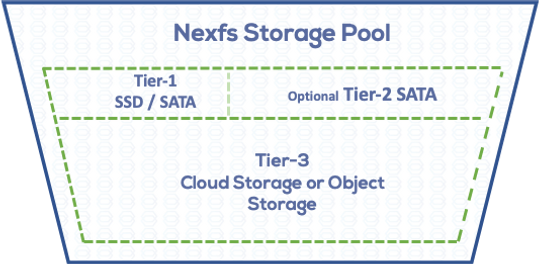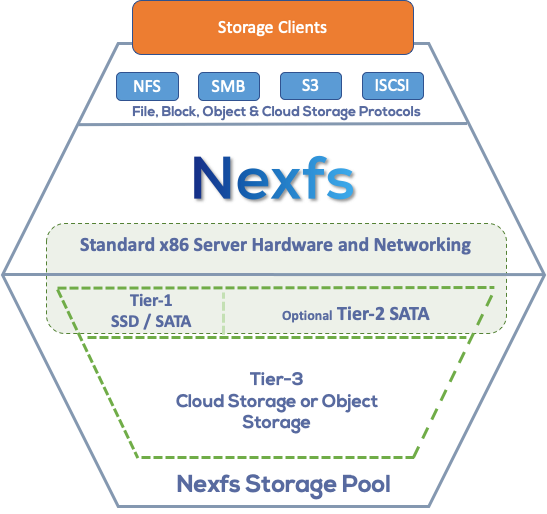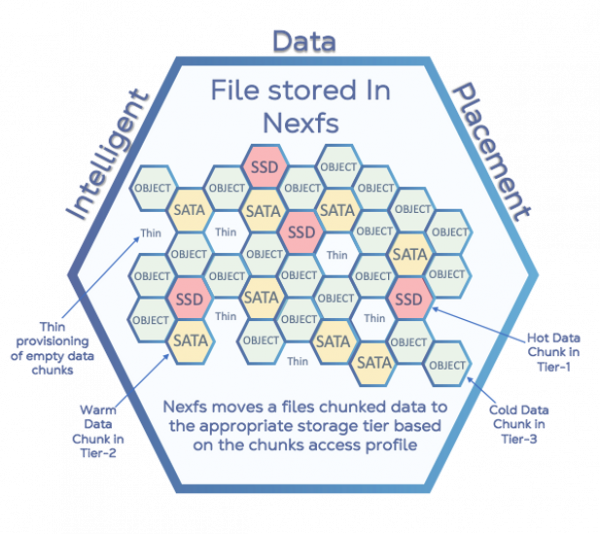Nexustorage From New Zealand With New SDS Solution
Nexfs to unify file, block and object storage including cloud
By Philippe Nicolas | July 30, 2021 at 1:04 pmNexustorage is finally ready to unveil its first public available release of Nexfs.
We discovered this company several months ago when we spoke with its CEO and founder, Glen Olsen. We then wait that moment to share the news to our readers community.
The company was incorporated in February 2021 and is located in Paraparaumu, a bit north of Wellington. Before being in this strat-up, Olsen spent some time at Caringo, PSInet, Logica CMG and EDS to name a few.
The main idea of the product is to offer an universal intelligent storage layer named Nexfs that spans file, block and object storage. Deployed on commodity hardware, Nexfs glues all storage devices whatever is the interface and re-exposes the combined layer via iSCSI, NFS, SMB, and S3. Nexfs layer relies on a multi-tier storage pool that hides data movement and data location on this pool.

The solution runs on existing hardware and be coupled with new hardware, but globally it represents a way to protect investment and find a new life for existing servers and storage units.
This new scalable file system is available free of charge with the community edition and is validated with Centos, Ubuntu and Debian Linux, being a software only solution. Disk filesystems xfs and ext4 with extended attributes are needed for tier-2 file systems.

Internally, Nexfs relies on several key technology elements developed by the Nexustorage team, among them SmartProtect, SmartTier and Nexassert:
- SmartProtect is a method to generate data protection by using replication for the primary to the secondary S3 compatible storage. The feature provides granularity to generate file copy each time a data chunk changes.
- SmartTier is the perfect companion fo SmartProtect but can run also independently. This feature enables the move of data chunks to secondary storage within a pool built and controlled by Nexfs. Supporting 3 tiers in this first release with SSD, SATA and object storage, the data placement engine moves back and forth data between tiers. This data management layer masks the physical location of data blocks with the beauty to have some of them residing on fast storage and others on slow ones i.e unfrequent data on SATA and cold on object or cloud storage. In other words, the granularity is at sub-file level what Nexustorage team called a chunk. Frequent access chunks are maintained on fast storage and deliver the needed QoS with the right cost alignment among all tiers. The fact that an access to a migrated file is initiated, it doesn’t copy back the entire file but only the needed chunk.
- Nexassert, under patent review, is the name of the technology developed also by Nexustorage to access data chunk where they resides. Thus, after the solution is used, the normal operation mode shows that files are not homogeneous stored in the same storage technology, i.e one storage technology, and finally their data chunks are distributed among SSD, HDD and object/cloud storage based on their access and frequency needs.

Exposing file and object are now pretty common but exposing a block interface, here iSCSI, built on object creates some huge constraints on the storage path. The team has made great development on this and supports for that Amazon S3 and MinIO. You can boot and run Microsoft Windows and Linux servers that reside in cloud and object storage.
On the file system layer, Nexfs reminds what Veritas can do with VxFS and its Dynamic Storage Tiering feature layered on multi-volumes, each one having its own characteristics. VxVM creates a meta-volume called a volume set that encapsulates each volume. In that case, the file path doesn’t change at all, only the block map changes but the entire file is managed i.e the granularity is the file itself not a sub-file like it is with Nexfs.
Nexfs is available via 2 components:
- Nexfscli is a management CLI released as open source available from https://github.com/nexustorage/nexfscli and downloadable from nexfscli from http://dlnexfsclipublicpreview.nexustorage.com/nexfscli.
- Nexfs Server is the engine available from http://dlnexfspublicpreview.nexustorage.com/nexfs.server.














 Subscribe to our free daily newsletter
Subscribe to our free daily newsletter


